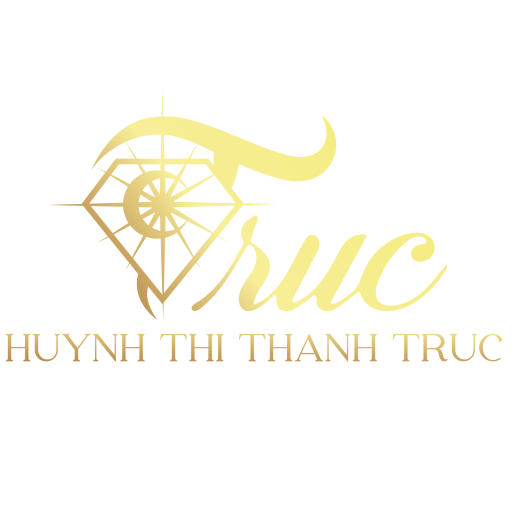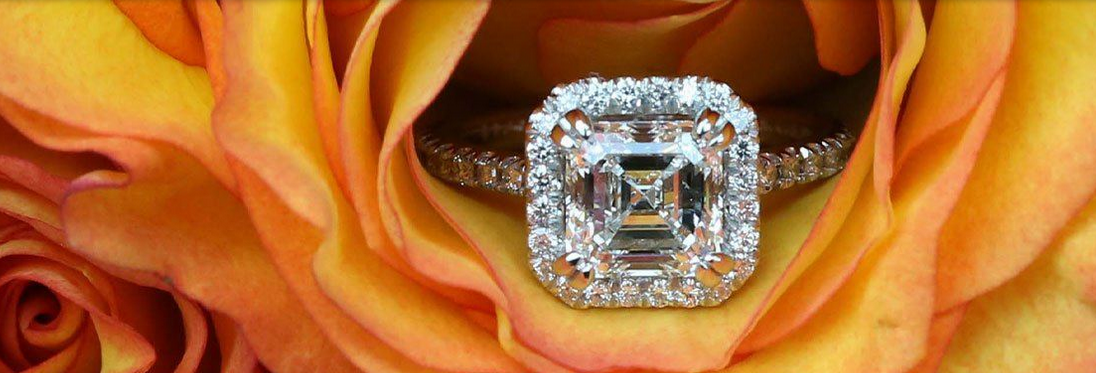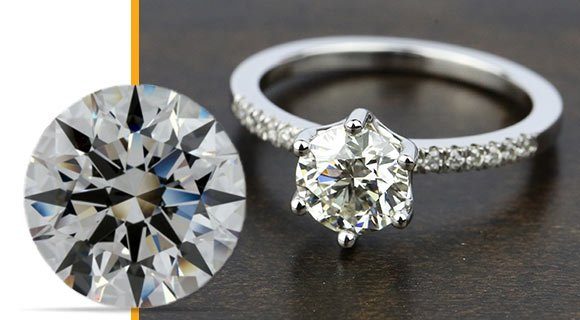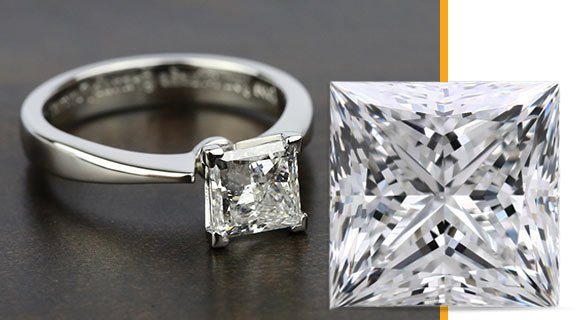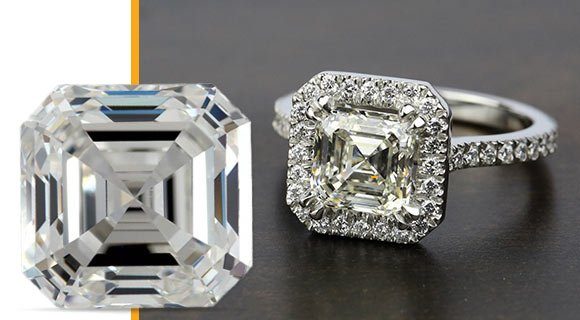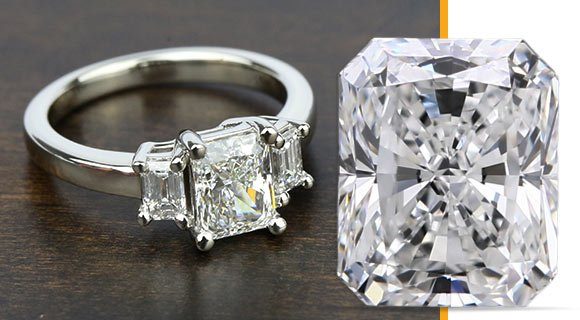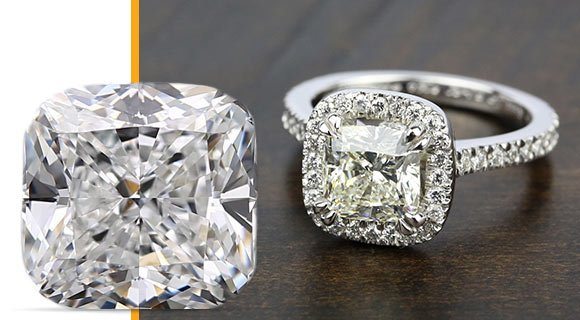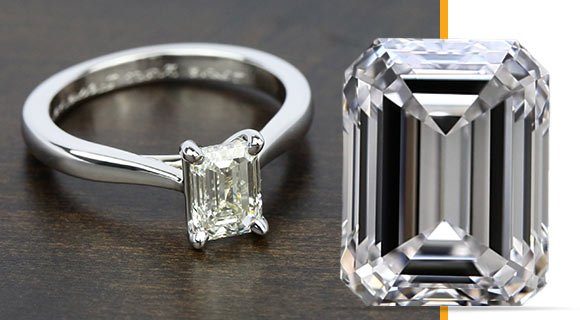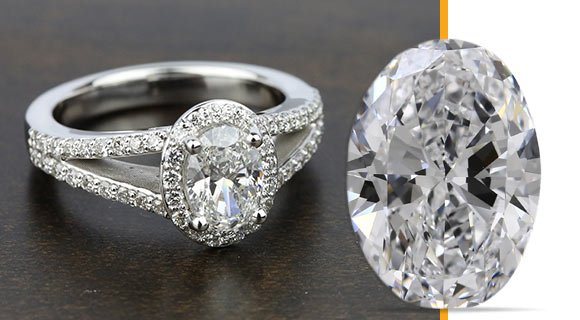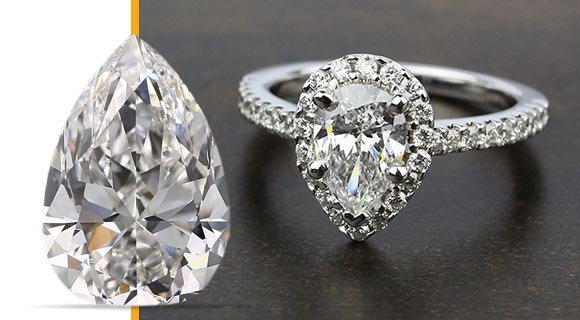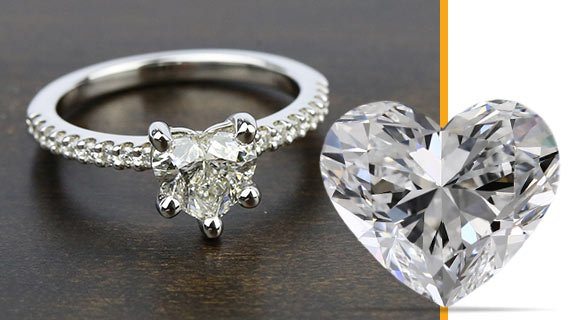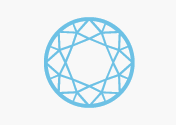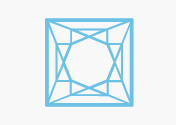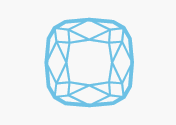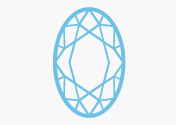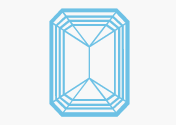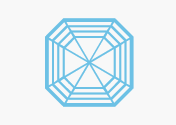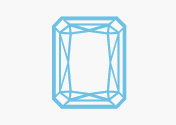Round Cut Diamonds
The most commonly chosen shape, round diamonds have been researched by gemologists more than any other variation. Renowned for its unrivaled fire and brilliance, this shape boasts excellent light refraction properties. When all else is equal, round cut diamonds are more valuable than alternative shapes.
Learn more about Round Cut Diamonds.
Princess Cut Diamond
A square stone with 90-degree corners, the princess shape originated in the United States in 1980. The most desirable princess diamonds are perfectly square in shape, with the more rectangular variations decreasing in value.
Learn more about Princess Cut Diamonds.
Asscher Cut Diamonds
Introduced in 1902 by renowned diamond cutter Joseph Asscher, this diamond shape utilizes many of the same cutting techniques as the emerald cut. What sets asscher diamonds apart are their uniquely angled and cropped corners creating a timeless look.
Learn more about Asscher Cut Diamonds.
Radiant Cut Diamond
Relatively new to the jewelry industry, radiant diamonds were introduced a little more than 20 years ago. This unique shape is a stunning hybrid of a traditional round cut and an elegant emerald cut, resulting in a square, near-square, or rectangular orientation. As the name suggests, radiant diamonds tend to emit a beautiful, memorable glow.
Learn more about Radiant Cut Diamonds.
Cushion Cut Diamond
First introduced to the jewelry market in the early 1800’s, the cushion cut diamond is rich with diamond history. Cut into a square or rectangular shape with rounded corners and sides, it’s considered by many to be a more vintage version of the round cut diamond.
Learn more about Cushion Cut Diamonds.
Emerald Cut Diamond
Emerald cut diamonds are usually rectangular in shape. Distinguished by beveled corners and step facets, this type of diamond is more transparent than other shapes, often requiring higher standards of clarity.
Learn more about Emerald Cut Diamonds.
Marquise Cut Diamond
The marquise cut is rumored to have been specially developed for King Louis XIV of France who wanted a diamond that simulated the smile of Marquise de Pompadour. The elongated Marquise stone has gracefully pointed ends for a dramatically beautiful appeal.
Learn more about Marquise Cut Diamonds
Oval Cut Diamond
Cut with the same number of facets as a round diamond, an oval shape emits nearly the same level of brilliance and fire. Due to its elongated shape, the oval cut can appear larger than a round diamond of equal carat (weight).
Learn more about Oval Cut Diamonds.
Pear Cut Diamond
Exuding elegance, the pear shape diamond (also referred to as a drop cut or teardrop diamond) is cut to resemble a drop of water with a single point and rounded end. The result is a cross between a round and marquise cut.
Learn more about Pear Cut Diamonds.
Heart Cut Diamond
Living up to its name, the heart cut diamond has become synonymous with love and affection, making it an excellent choice for an anniversary or engagement ring. One of the most demanding diamond cuts to create, a heart shaped stone requires great skill and dexterity from the diamond cutter.
Learn more about Heart Cut Diamonds.
